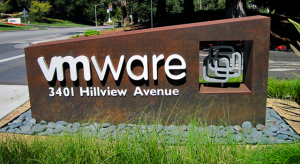 It would be hard to disagree with the opinion that VMware has had a tough couple of weeks.
It would be hard to disagree with the opinion that VMware has had a tough couple of weeks.
In the last week of January, the company revealed through a financial filing its plans to lay off 900 employees and exit some business units. The same day, the company’s revenues missed forecasts pontificated by financial analysts, causing the company’s stock to plummeted 27 percent. To top it all off, the tech company’s chief technology officer announced he’s leaving VMware to pursue a venture capitalist career, less than six months after the company had a shakeup in the CEO role.
So, what’s going on with VMware? Once the pre-eminent hypervisor company in a market it practically invented, analysts say a series of moves during the past 18 months have reset the dynamics of the market. VMware – which storage giant EMC owns a majority stake of – still holds a leading position, but Microsoft’s Hyper-V hypervisor is quickly gaining momentum.
“There really isn’t any reason to fear that something drastic is going to happen to VMware,” says Stuart Miniman, who tracks the virtualisation market for the Wikibon Project. “At the same time, it’s not a bad time for customers to re-evaluate their choices, given the increasing maturity of other products on the market. vSphere is still a solid choice, but there are other options to consider, and some may be a more attractive price-point.”
If Zeus Kerravala, an independent industry analyst with ZK Research and a Network World blogger, had to point to one singular event that turned the hypervisor market into being a hyper-competitive one, it was what he and other pundits call the vTax flop. Two years ago, VMware changed the pricing model for its popular vSphere 5 management platform, charging customers based on the amount of virtual memory (vRAM) the system manages, instead of a per-CPU pricing.
In reality, the pricing changes resulted in some customers saving money and others paying slightly more, but a small yet vocal tangent of customers almost immediately cried foul, leading to the term “vTax” to be dubbed. A year later at VMworld 2012, the company’s new CEO, Pat Gelsinger, reversed the pricing change and reverted to the original pricing model. But the damage had been done, Kerravala says, and the situation “opened the door” for users to look at other hypervisors. Microsoft took advantage.
In the past 18 months, Microsoft has not only been improving the functionality of its VMware-competing hypervisor, but it is also making a big marketing push to get the software into enterprise data centres where VMware has dominated. The third generation of Microsoft Hyper-V is included with a Windows Server 12 licence, and the company has worked to beef it up. Microsoft doubled the RAM capacity per VM to 1TB, added live migration and upped the ability to manage nodes per cluster from 32 to 64. “Hyper-V is now at feature parity for a large percentage of enterprise workloads,” says Forrester virtualisation analyst David Bartoletti. “It’s definitely good enough for many workloads.”
Kerravala’s research backs this up, too. A recent survey found 20 percent of respondents reporting they have deployed Microsoft Hyper-V in production data centres, with another 20 percent exploring it. The most surprising aspect of the survey: the respondents were all VMware users. “Microsoft is having a bigger impact than a lot of people believe,” Kerravala says.
The rise and maturation of Microsoft’s “good enough” Hyper-V is only part of the new dynamics in the virtualisation market, though. The bigger issue is that hypervisors are becoming commoditised and VMware needs to look beyond just hypervisors for its growth moving forward, Bartoletti says.
Mergers and acquisitions seem to be VMware’s recent method of choice to expand its portfolio, but in doing so, the company has created new tensions with some of its oldest partners. VMware’s biggest splash in the M&A market was to drop $1.26 billion to buy Nicira, the virtual networking startup headed by the creator of the software-defined networking (SDN) protocol OpenFlow. While propelling VMware into the heart of the debate about next-generation networking, the acquisition also put strain on VMware and parent-company EMC’s relationship with networking giant Cisco. In response, Cisco has hinted at moves to distance itself from EMC and VMware, including recently cozying up with EMC competitor NetApp.
The M&A strategy could be related to the layoffs VMware has recently announced. While company officials declined to provide additional information about which sections of the business will be cut back, Kerravala says it’s only natural after M&A that efficiencies can be created by eliminating duplicate positions. Having CTO Steve Herrod leave less than six months after his former boss, Paul Maritz, left the top job at VMware, means a fresh shot of new ideas for the company, Kerravala says.
Customers don’t seem to be hugely worried or swayed by the recent goings with the company. In fact, Kerravala says all in all, increased competition between VMware and Microsoft, as well as Citrix with Xen Server and Red Hat with the Kernel-based Virtual Machine (KVM), is a good thing for customers, Kerravala says.
Chris Harney is founder and president of the New England VMware User Group, which recently changed its name to the Virtualisation Technology User Group to reflect the rise of non-VMware hypervisors used in the market. Harney says customers are choosing their virtualisation technology based on their skills sets, pricing and availability.
“If you’re really good with Citrix, then Xen is probably a good away to go,” he says. VMware has the advantage, he says, because the company’s been around longer, but he says there’s a “perfect storm” of other hypervisors maturing, like Microsoft Hyper-V, while customers are looking for other options on the market. “I don’t sense a lot of concern by users about problems VMware may be having,” he says. As long as it doesn’t impact the product, users likely will not care. “I don’t expect to see people jumping ship, but it is interesting to see that there are other viable options out there on the market now for virtualisation.”





